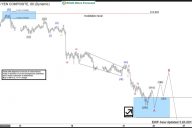
The repeal-n-replace health care bill needs a “Yes” vote from the House of Representatives on Thursday, March 23rd. With it, the financial markets may move higher on the belief that Trump/Congress will be able to pass corporate-friendly legislation from tax overhaul to regulatory reform. Without it, risk assets may stumble on the fear that political leaders will be unable to provide ambitious stimulus measures down the road.
The prospect of lower taxes has always been at the heart of the “Trump rally” since early November. To a lesser extent, the notion that the incoming President would support a $1 trillion package for roads, bridges and infrastructure projects also stoked stock buying flames. With infrastructure spending not showing up in the executive branch’s budget, however, more weight has fallen on the shoulders of tax rate reductions.
Let’s assume that the health bill gets back on track. Are prospective changes to the corporate tax code all they’re cracked up to be?

In the chart above, it is easy to see that the typical S&P 500 corporation has experienced ever-decreasing effective taxes for the last 30 years. Yet the consistent decline in effective tax rates has neither boosted the long-term trend of economic growth nor prevented recessions. Lower gross domestic product (GDP) alongside recessions may have an adverse effect on profits, sales as well as stock prices.

Might reducing the statutory corporate tax rate lead to even lower effective corporate tax rates, thereby boosting corporate profits as well as distributions to shareholders? Perhaps. Yet most of it has already been accounted for in the price run-up since the election.
In an optimistic scenario, a 15% reduction in the statutory rate (previous chart above) might lead to a 7% reduction in the effective rate from 28% to 21%. It follows that S&P 500 GAAP profits could, hypothetically, get a 7% boost to $127.14 from the anticipated year-end value ($118.83). Forward P/Es on $127.14 would still be remarkably elevated at 18.4. The 250 point run-up for the S&P 500 since early November (12%), though, has more than accounted for the tax cut stimulus already.











No Comments